Last updated: September 22, 2022
Article
The Secretary of the Interior's Standards for the Treatment of Historic Properties: History of the Standards
A History of The Secretary of the Interior’s Standards for the Treatment of Historic Properties with Guidelines for Preserving, Rehabilitating, Restoring & Reconstructing Historic Buildings
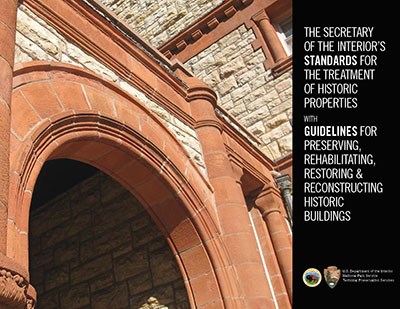
1966
The National Historic Preservation Act is passed by Congress. The act requires that the Federal Government "accelerate its historic preservation programs and activities." It authorizes the Secretary of the Interior (whose responsibilities designated in the act are delegated to the Director of the National Park Service) "to expand and maintain a National Register of Historic Places," to "administer a program of direct grants for the preservation of properties included in the National Register," and to "establish professional standards for the preservation of historic properties."
1971
The Grants-in-Aid Program for acquisition and development of National Register–listed properties is funded. This implements the National Park Service (NPS) grants program established by the National Historic Preservation Act, to be administered by the Office of Archeology and Historic Preservation (OAHP).
June 1973
Historic Preservation Grants–in–Aid: Policies and Procedures are developed by OAHP and issued by the NPS as the first guidance published for administering the Grants-in-Aid program. The grants program is to provide federal assistance for the development of historic properties for the public benefit. Funds are available for three specific treatments: stabilization, restoration and reconstruction. Adaptive use is not included, but the manual explains that it is eligible for funding as a type of restoration treatment, stating that: "The National Park Service recognizes adaptive use of historic properties as a useful means of preservation. An historic property is improved or restored for adaptive use when all or a portion (façade, for example) of the exterior is restored with [the] interior adapted to a contemporary functional use. Adaptive restoration is the appropriate treatment for structures that are visually important in the historic scene but do not otherwise qualify for exhibition purposes."
1974
The Housing and Community Development Act of 1974 and the Emergency Home Purchase Assistance Act of 1974 are enacted. These programs are to be administered by the Department of Housing and Urban Development (HUD) to provide block grants for community revitalization and loans to home owners to rehabilitate old buildings listed in or eligible for listing in the National Register. In accordance with the National Historic Preservation Act, which directs the Secretary of the Interior, in consultation with the Advisory Council on Historic Preservation, to "promulgate guidelines for Federal Agency responsibilities," the Council and HUD request that NPS develop guidance for administering these programs.
March 1976
Preservation Project Standards, developed by W. Brown Morton III and Gary L. Hume, are issued by the NPS as a final draft of operational procedures for administering projects funded under the NPS Grants–in–Aid program. The three original treatments eligible to be funded by this program have been expanded to seven: acquisition, protection, stabilization, preservation, restoration, rehabilitation and reconstruction. These seven treatments represent activities that the NPS is authorized to carry out under the Historic Preservation Act. Eight general standards apply to all the treatments, with additional standards for each treatment. A variety of sources is consulted in developing these standards and guidelines, including professional preservation policies established by the American Institute of Architects and administrative procedures for NPS–owned historic properties, as well as international documents, such as the 1964 Venice Charter.
August 1976
Guidelines for Rehabilitating Old Buildings, also developed by W. Brown Morton III and Gary L. Hume, are issued by the NPS as preliminary guidance for the HUD programs. Consisting of eight guidelines and a "Checklist for the Application of the Guidelines" in a "Consider" vs. "Avoid" format, this is the first NPS guidance specifically for rehabilitation. (Note: The Preservation Project Standards and the rehabilitation guidelines are being developed during the same time period but for different programs.)
October 1976
The Tax Reform Act is passed creating the Federal Historic Preservation Tax Incentives program for the rehabilitation of historic properties for income–producing purposes. The Tax Reform Act of 1976 is the culmination of years of work beginning in 1970 when the Council on Environmental Quality invited the NPS, represented by W. Brown Morton III, to participate in a special task force to investigate how the federal tax code could be changed to encourage the rehabilitation of historic buildings.
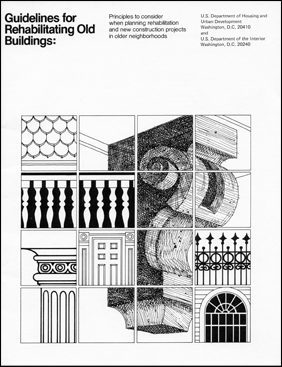
January 1977
Guidelines for Rehabilitating Old Buildings: Principles to consider when planning rehabilitation and new construction projects in older neighborhoods are co-published by the Department of the Interior (DOI) and the Department of Housing and Urban Development (HUD) as final guidance for the HUD programs.
March 1977
The Secretary of the Interior’s Standards for Rehabilitation are published in the Federal Register for comment as proposed Standards for Rehabilitation—formerly termed "Guidelines"—required to implement the Federal Historic Preservation Tax Incentives program. The eight Guidelines have been retitled "Standards" to reflect language used in the legislation stating that rehabilitation projects would be certified according to the "Standards" of the Secretary of the Interior. These standards are issued by the NPS concurrently as interim program guidance until they are codified.
September 1977
The Secretary of the Interior’s Standards for Rehabilitation and Guidelines for Rehabilitating Historic Buildings are published in final, having been expanded from eight to ten standards to incorporate suggestions received during the comment period. The two new standards are Standard 7 which states that "cleaning of structures shall be undertaken with the gentlest means possible" and Standard 8 which addressed archeological resources affected by, or adjacent to, any project. The "Checklist for the Application of the Guidelines" has been shortened to "Guidelines" which are now presented in a "Recommended" vs. "Not Recommended" format replacing "Consider" vs. "Avoid." The Standards and Guidelines are reprinted in 1978 and 1980 by the Heritage Conservation and Recreation Service (HCRS) when OAHP is relocated to this new agency established within DOI by President Jimmy Carter. OAHP returns to the NPS when HCRS is abolished in 1981 by President Ronald Reagan.
October 1977
The Secretary of the Interior’s Standards for Rehabilitation are published as final regulations in the Code of Federal Regulations (36 CFR 67) for the Federal Historic Preservation Tax Incentives program.
1978
The Secretary of the Interior’s Standards for Historic Preservation Projects are published in the Code of Federal Regulations as final regulations (36 CFR 1207) for the NPS Grants–in–Aid program.
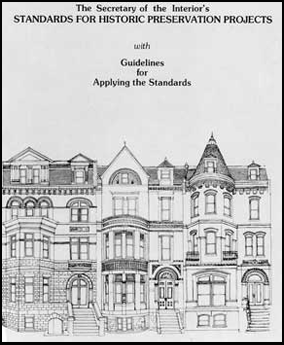
1979
The Secretary of the Interior’s Standards for Historic Preservation Projects with Guidelines for Applying the Standards, prepared by W. Brown Morton III and Gary L. Hume, are published. This is the first time the Preservation Project Standards are accompanied by guidelines.
1983
The Secretary of the Interior’s Standards for Rehabilitation with Guidelines for Rehabilitating Historic Buildings, which include a major revision of the rehabilitation guidelines, developed by Gary L. Hume and Kay D. Weeks, are published.
1985
The Secretary of the Interior’s Standards for Historic Preservation Projects with Guidelines for Applying the Standards are reprinted, but without the rehabilitation guidelines, previously published in 1983.
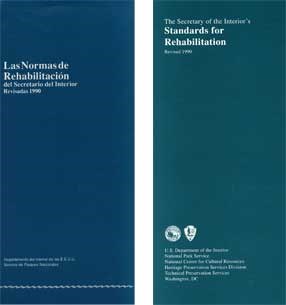
1990
The Secretary of the Interior’s Standards for Rehabilitation are revised by W. Brown Morton III, Gary L. Hume, Kay D. Weeks and H. Ward Jandl after a lengthy review and comment period. They are adopted as regulatory in the Code of Federal Regulations (36 CFR 67) for the Federal Historic Preservation Tax Incentives program, replacing the original 1977 rehabilitation standards. Important revisions include changing the word "building" to "property" throughout and expanding Standard 8 to include mitigation if disturbance to archeological resources is necessary during a rehabilitation project. Standard 9 is revised by replacing "contemporary design" with clearer guidance — specifically, that the new work must not destroy historic character–defining materials, it must be differentiated from the old, and it must be compatible with the historic character of the property. The Standards are also printed in Spanish as "Las Normas de Rehabilitation del Secretario del Interior."
1992
The Secretary of the Interior’s Standards for Rehabilitation & Illustrated Guidelines for Rehabilitating Historic Buildings are published. Anne E. Grimmer and Kay D. Weeks develop this publication which, for the first time, provides illustrations to help interpret the rehabilitation guidelines.
The Secretary of the Interior’s Standards for the Treatment of Historic Properties are published. These replace the seven original Standards for Historic Preservation Projects with four "treatment" standards: preservation, rehabilitation, restoration and reconstruction. Acquisition is eliminated because it is technically not a treatment, and protection and stabilization are incorporated in preservation. The word "shall" is replaced by "will."
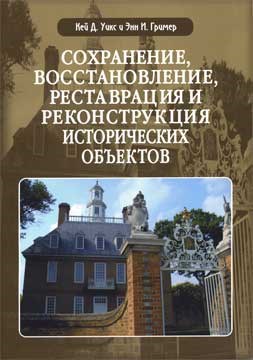
1995
The Secretary of the Interior’s Standards for the Treatment of Historic Properties are codified in the Code of Federal Regulations (36 CFR 68) as regulatory for NPS Grants–in–Aid projects.
The Secretary of the Interior’s Standards for the Treatment of Historic Properties with Guidelines for Preserving, Rehabilitating, Restoring & Reconstructing Historic Buildings, developed by Kay D. Weeks and Anne E. Grimmer, are published, introducing new, expanded and illustrated guidelines for each of the four treatment standards. This is translated into Russian and published in Moscow in 2008.
2006
The report of the special committee of the National Park System Advisory Board appointed to re-examine the thirty–year old historic preservation tax incentives program reaffirms the validity of the Secretary of the Interior’s Standards for Rehabilitation. The committee concludes that the Standards "remain appropriate...and therefore recommends that there be no change to them."
2011
The Secretary of the Interior’s Standards for the Treatment of Historic Properties & Illustrated Guidelines on Sustainability for Rehabilitating Historic Buildings, developed by Anne E. Grimmer with Jo Ellen Hensley, Liz Petrella and Audrey T. Tepper, are published. These revised and greatly expanded guidelines replace the chapter on "Energy Conservation" in The Secretary of the Interior’s Standards for Rehabilitation & Illustrated Guidelines for Rehabilitating Historic Buildings, published in 1992.
2017
The Secretary of the Interior’s Standards for the Treatment of Historic Properties with Guidelines for Preserving, Rehabilitating, Restoring & Reconstructing Historic Buildings, revised by Anne E. Grimmer, are published. The Guidelines for these four treatments have been revised and updated to include more building materials and systems, such as those that have become “historic” since this document was first issued in 1995. The Guidelines, which are abundantly illustrated with all new photographs in color, have also been expanded to address new topics and provide additional guidance.
2019
The Secretary of the Interior's Standards for Rehabilitation & Guidelines on Flood Adaptation for Rehabilitating Historic Buildings, by Jenifer Eggleston, Jennifer Parker, and Jennifer Wellock, are published. The Guidelines on Flood Adaptation provide information about how to adapt historic buildings to be more resilient to flooding risks in a manner that will preserve their historic character.
